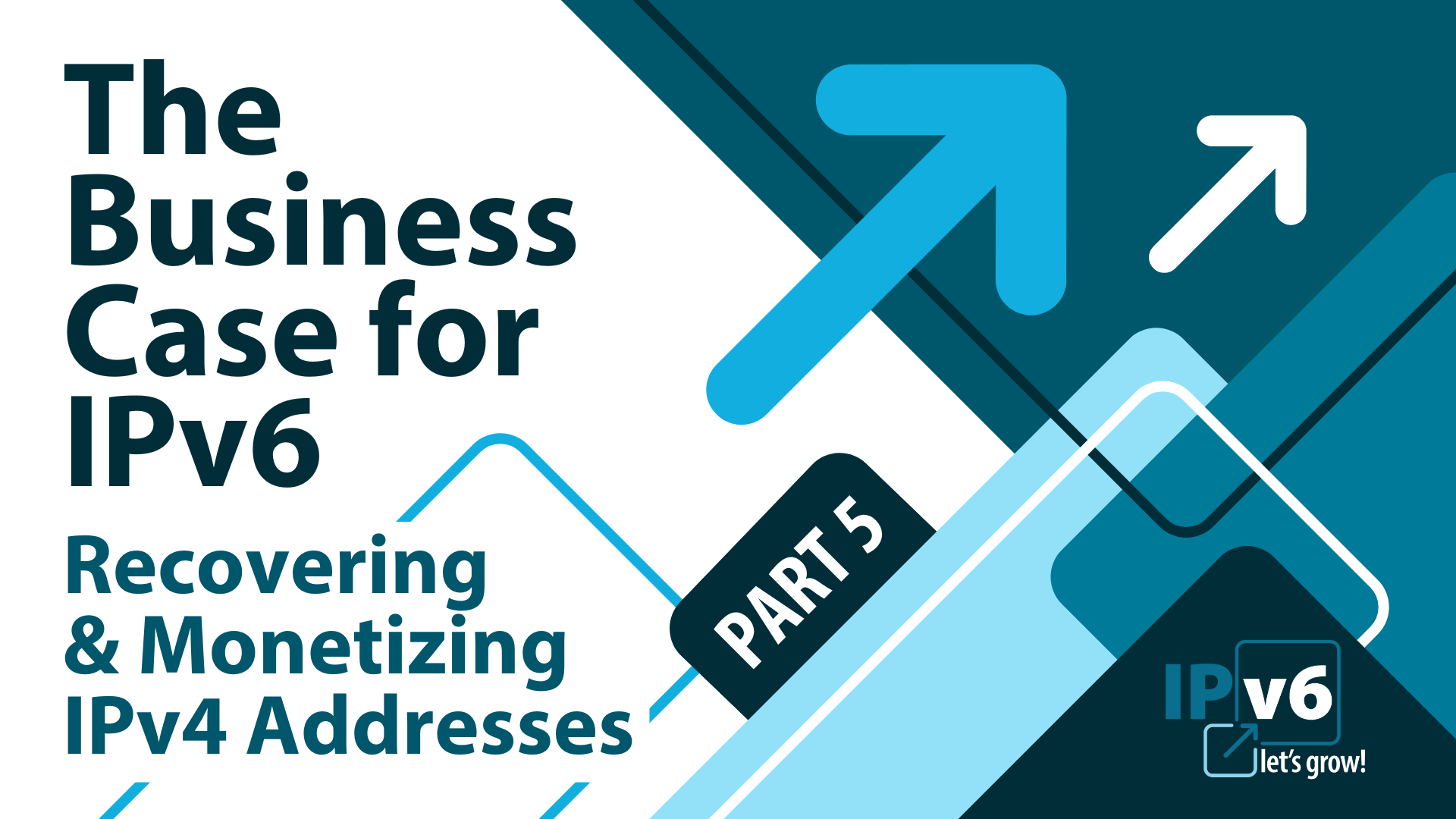
The Business Case for IPv6: Recovering and Monetizing IPv4 Addresses
One set of network operators has the strongest and clearest incentive to deploy IPv6: those holding a lot of IPv4 addresses.
Since the IPv4 market began, around 2010, thousands of organizations have transferred addresses. At the time of writing a single /16 is worth millions of dollars on the transfer market. Those millions can turn an IT department into a revenue center and fund other critical initiatives.
Many of the organizations holding IPv4 addresses are simply not using them, or at least not using them as efficiently as they could. Many more organizations could sell their IPv4 addresses to fund their IPv6 migration and likely have excess cash remaining.
How to Shift from IPv4 to IPv6 as the Basis for Network Connectivity
To move from IPv4 as the basis of a network to IPv6, consideration needs to be made for supporting ongoing IPv4 reachability requirements. Several transition mechanisms exist to support network designs with exactly that purpose.
Computers, phones, and infrastructure all handle IPv6 easily, without users even noticing. They even support IPv6-only very well, making use of 464XLAT and similar transition mechanisms realistic. MacOS and Windows support the “There’s no IPv4 here” DHCP option. Apple phones require apps to support NAT64, and Android includes a CLAT so that even an application with IPv4 addresses literally coded into it will work on an IPv6-only network. With CLAT support coming for Windows 11, support for IPv6-only is nearly perfect for general Internet access.
As of mid-2024, consumer electronics and Internet of Things devices other than mobile devices generally have terrible IPv6 support. If the network will remain dual-stack (running both IPv4 and IPv6), NAT44 may be used to share addresses. For an IPv6-only network, 464XLAT or MAP-T can carry that IPv4 traffic to the IPv4 Internet.
NAT44 alone will allow a few IPv4 addresses to be shared among many devices, but all traffic will have to use the NAT44 device. That means that the device is a single point of failure. Even in a redundant pair, it becomes a choke point, an attack point, and a potential source of down time. With IPv6, about half of all traffic will use the clean path. The amount of IPv6 traffic will increase as more sites, services, and streaming devices enable IPv6.
The Virtue of Monetizing IPv4
As described in RFC7381, “Enterprise IPv6 Deployment Guidelines,” rolling out IPv6 isn’t especially hard or costly. It’s simply time-consuming and may require project management. The millions of dollars from an IPv4 sale can turn the additional network technical debt into revenue.
The development of a transfer market to connect buyers and sellers did not appear to be inevitable in the early 2000s. However, as the Internet has grown and evolved, there continues to be real demand for public (globally unique, registered) IPv4 addresses. The transfer market is incredibly helpful to the Internet ecosystem because it helps organizations with inefficient and underutilized IPv4 address allocations justify their network optimization and IPv6 deployment to recover those IP addresses and make them available to other parties that have such a need.
Any views, positions, statements, or opinions of a guest blog post are those of the author alone and do not represent those of ARIN. ARIN does not guarantee the accuracy, completeness, or validity of any claims or statements, nor shall ARIN be liable for any representations, omissions, or errors contained in a guest blog post.
Recent blogs categorized under: IPv6
GET THE LATEST!
Sign up to receive the latest news about ARIN and the most pressing issues facing the Internet community.
SIGN ME UP →Blog Categories
Updates • Outreach • Internet Governance • Grant Program • Tips • RPKI • IRR • IPv6 • Public Policy • Caribbean • Elections • ARIN Bits • Fellowship Program • Training • Security • Guest Post • Data Accuracy • Business Case for IPv6 • IPv4 • Customer Feedback



